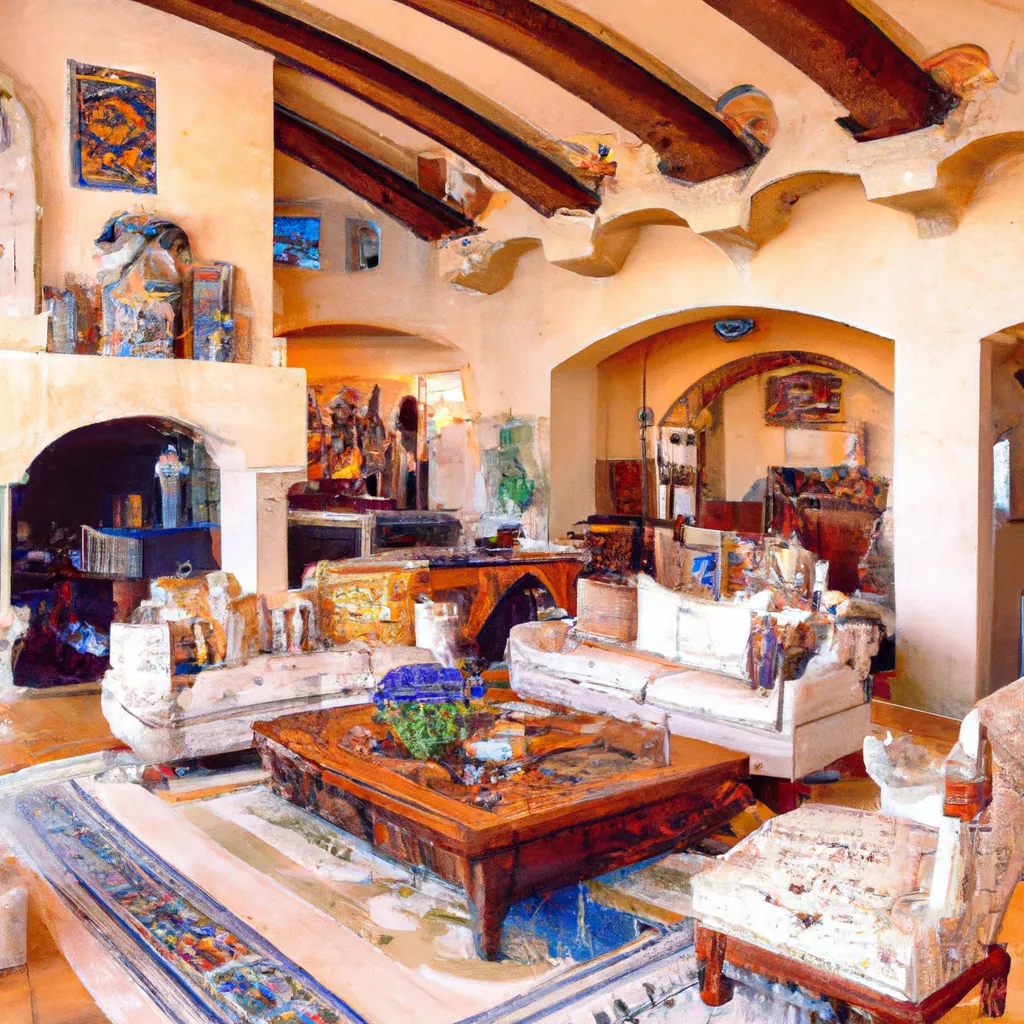A retreat in Mallorca, Spain, transformed without moving walls.

This article originally appeared in the November 2013 issue of Architectural Digest magazine.
In the age of television home remodeling programs, most stories of home transformations capture their "after" version, leaving little trace of the understated "before." But inspired decorating can be just as transformative as a complete remodel. Without rearranging the walls, interior designer Michael S. Smith dramatically reimagined a hideaway on the Spanish island of Majorca for a couple who are his longtime friends and clients.
Built in 1992 on a hilly plot with magnificent views of the Mediterranean Sea and the Tramuntana Mountains, the villa consists of two buildings.
The main building has a two-story entrance, an attractive living room and spacious kitchen surrounding a small patio, and a master bedroom and guest room on the second floor. Near the neatly laid out stone terrace is a three-story guest house with three adjoining rooms.
While this place sounds very appealing, Smith's clients didn't immediately love it. "The house was perfect in terms of its layout, proportions and location," says the designer, who was vacationing on the island with the husband and wife when they decided to find their own retreat here. "But at first both of them were reluctant to buy the property because they thought it would never be a real Majorcan estate," he explains, noting that the existing interior was cold, mismatched and impersonal. "There was no patina or sense of longevity here, and it lacked the sophisticated, unifying aesthetic style that makes a home cozy." Smith convinced his clients that he could create an appearance as if it were an old time estate, and they bought the place. Immediately afterward, the designer began researching local furniture, textiles and patterns. To make it perfect, he not only took into account the decorative arts traditions of Spain, but also those of England, France, Italy and North Africa - places whose influence had permeated Mallorca for centuries.
The next remodeling, according to Smith, was "purely decorative".
He started by painting, decorating the walls with a variety of motifs typical of the region, from decorated patterns in the living room to hand-drawn flower designs in the bathroom. For the main entrance, he chose a trompe-l'oeil treatment that resembles large blocks of polished stone, giving the house a certain grandiosity despite its simple stone facade. "It's the first room people encounter, it sets the tone," Smith says.
The most significant remodel occurred in the kitchen, which was given new life after removing some of the upper cabinets and adding Alhambra-style paneling that Smith custom-ordered based on examples dating back to the 16th century.


When Smith was choosing textiles, he was delighted to discover that one of his favorite fabrics - blue-and-white flame stitch, or "tela de lenguas" - is handmade right on the island. This pattern is everywhere in the house - on chairs, as curtains, and on the walls in the guest room. On the floors, traditional braided rugs are combined with exquisite Persian carpets. This elegant mix of inexpensive and expensive pieces is much favored by the owners, passionate art collectors who divide their time between Mallorca, New York, London and Los Angeles.
Walk through the house to see the evolution of European taste over time with a wide range of furniture combining English Regency and Italian Baroque styles with more exotic pieces such as Japanese side chairs from Portugal and an Indian table from 1900. Some Spanish pieces were returned from the United States, where they served in Mediterranean-inspired villas. The collection is complemented by paintings and furniture acquired at auction from the sale of Marsh's banking dynasty, the Mallorca family, as well as auction finds from the home of designer David Easton in New York State. The latter gave Spanish mirrors, to which Smith gave prime space above the fireplaces in the living room.
These purchases lend a sense that the house and its contents are geographically appropriate-an important concept for both designer and clients. "The overall effect is theatrical, but there are no false notes here," says Smith, who frequents the estate with his partner, James Kostos, the new U.S. ambassador to Spain.
As for the owners, they often wonder how Smith was able to create the historic character the house lacked simply by reimagining the decor. The owner says, "Michael made a property that was new and out of place feel like it had been here for centuries. "
Tags
Comment
Popular Posts
Popular Offers




Subscribe to the newsletter from Hatamatata.com!
Subscribe to the newsletter from Hatamatata.com!
I agree to the processing of personal data and confidentiality rules of Hatamatata









